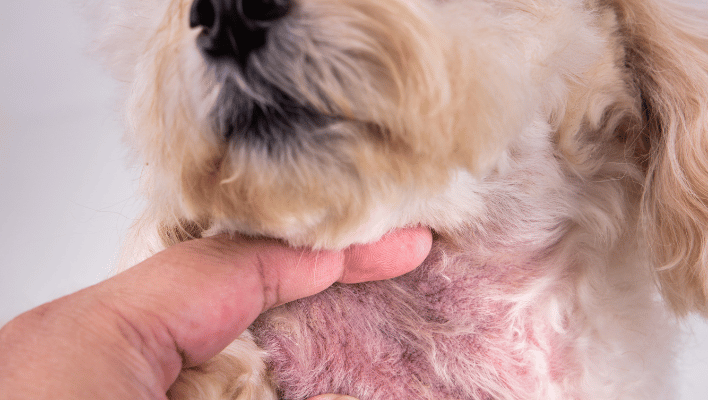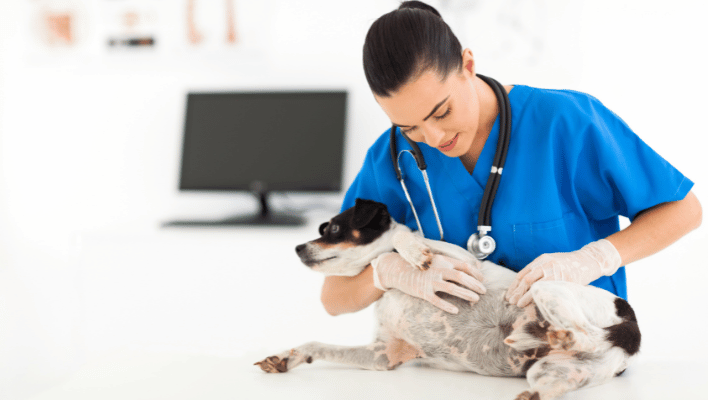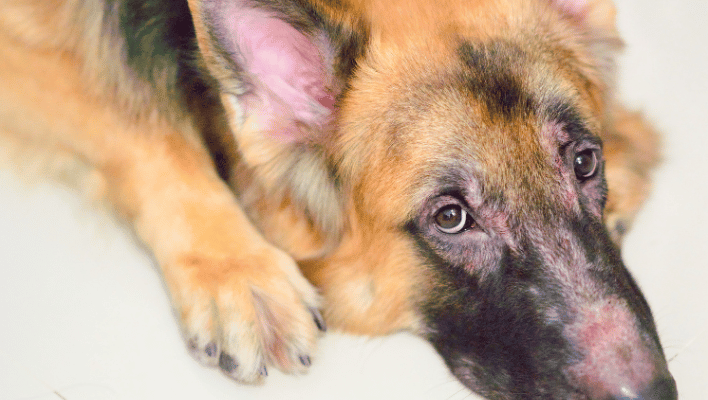When it comes to our furry friends, keeping an eye out for their well-being is of utmost importance. Our beloved dogs can also suffer from various Canine Skin Disorders conditions, some of which might appear quite alarming at first glance. In this article, we will delve into the early stages of canine skin diseases, helping you identify what to look for and how to take proactive steps for your pet’s health and comfort.
Table of Contents
1. What Does a Skin Disease Look Like on a Canine?
You know your dog’s coat like the back of your hand. So, when something unusual catches your eye, it’s time to investigate further. Keep an eye out for:
- Redness and Inflammation: Areas of red or irritated skin might indicate a problem.
- Excessive Scratching: If your dog is constantly scratching or biting a certain area, there could be an underlying issue.
- Hair Loss: Unexplained hair loss or thinning patches could signal a skin ailment.
- Bumps and Lumps: New growths or bumps should be examined by a vet.
- Unpleasant Odor: An unusual, persistent odour could be a sign of a problem.

2. Bacterial Skin Infections in Canine Skin Disorders
Bacterial skin infections can cause discomfort for your dog. Look for:
- Pus-Filled Bumps: These can range in size and might rupture, causing more issues.
- Crusty Skin: Dry, flaky, or crusty patches might appear, especially around the infected area.
- Redness and Swelling: Inflamed skin can be a sign of a bacterial infection.
3. Unraveling Dermatitis in Canine Skin Disorders
Dermatitis refers to skin inflammation and can come in different forms:
- Contact Dermatitis: Exposure to certain substances might lead to redness, itching, or blisters.
- Atopic Dermatitis: Allergies to pollen, dust mites, or mould can trigger this chronic condition.

4. Decoding Seborrhea in Canines
Seborrhea results from an overproduction of oil and might manifest as:
- Greasy Skin and Coat: Excessive oiliness could be a sign of seborrhea.
- Flaky Skin: Dry, flaky skin is another symptom to watch for.
- Odour: A distinct, unpleasant odour might accompany seborrhea.
5. Common Culprits: Allergies and Your Canine Skin Disorders
Dogs can develop allergies, just like humans. Keep an eye out for:
- Itchy Skin: Allergic reactions often lead to intense itching.
- Sneezing and Watery Eyes: Respiratory symptoms might accompany skin allergies.
- Ear Infections: Allergies can contribute to recurring ear problems.
6. The Persistent Ring of Ringworm
Despite its name, ringworm is not a worm, but a fungal infection. Signs include:
- Circular Patches: Bald patches with a reddish ring-like appearance might emerge.
- Scaly Skin: The affected area can become scaly and dry.
7. Navigating the Realm of Dry Skin
Dry skin can make your dog uncomfortable. Look for:
- Flakiness: If you notice excessive flaking, your dog might have dry skin.
- Dull Coat: A lacklustre coat could be a result of insufficient moisture.
8. Atopic Dermatitis: A Tale of Itchy Skin
Atopic dermatitis is an allergic skin condition characterized by:
- Relentless Itching: Your dog might scratch, lick, or bite the itchy areas.
- Rubbing Against Surfaces: Dogs might rub themselves against furniture to alleviate itching.
9. Yeast Infections: Unwanted Intruders
Yeast infections can occur in warm, moist areas like the ears or folds of skin. Watch for:
- Odour: Yeast infections often have a distinctive smell.
- Redness and Discharge: Red or inflamed skin with discharge might indicate yeast overgrowth.
10. Pyoderma: Pus and Skin Troubles in Canine Skin Disorders
Pyoderma refers to a bacterial infection that can cause:
- Pus-Filled Bumps: These can be painful and require veterinary attention.
- Crusty Sores: The affected area might develop crusty, oozing sores.

